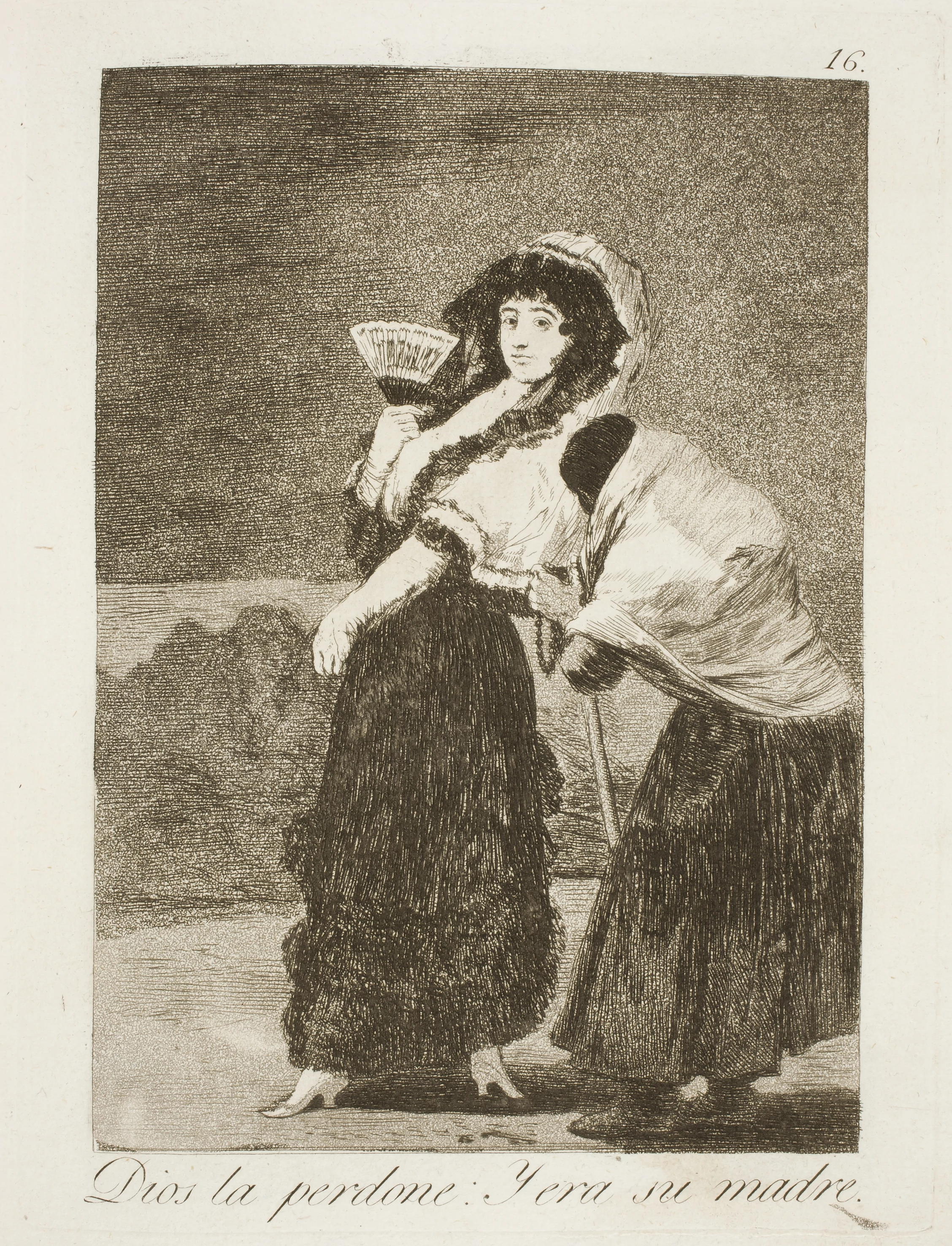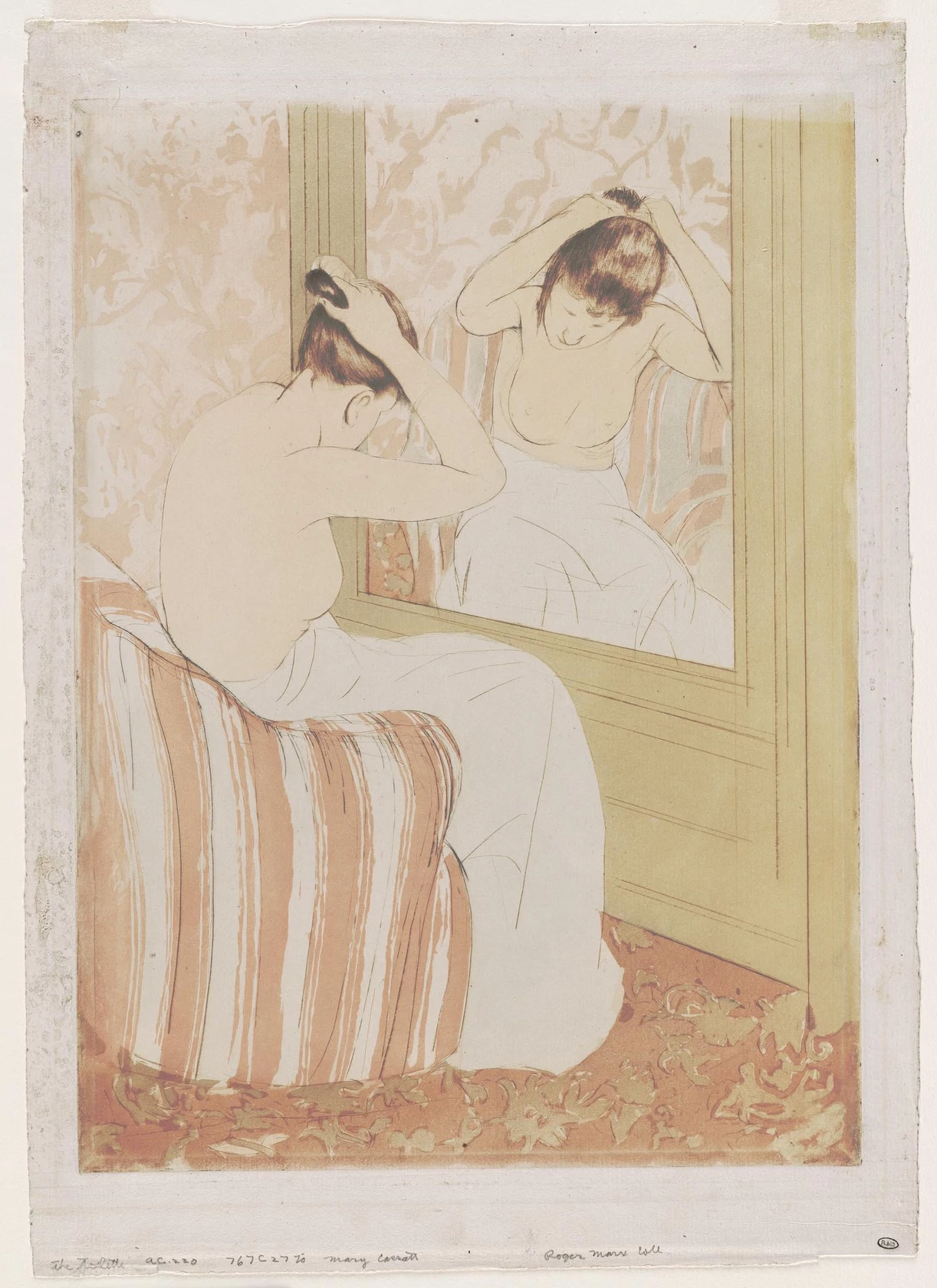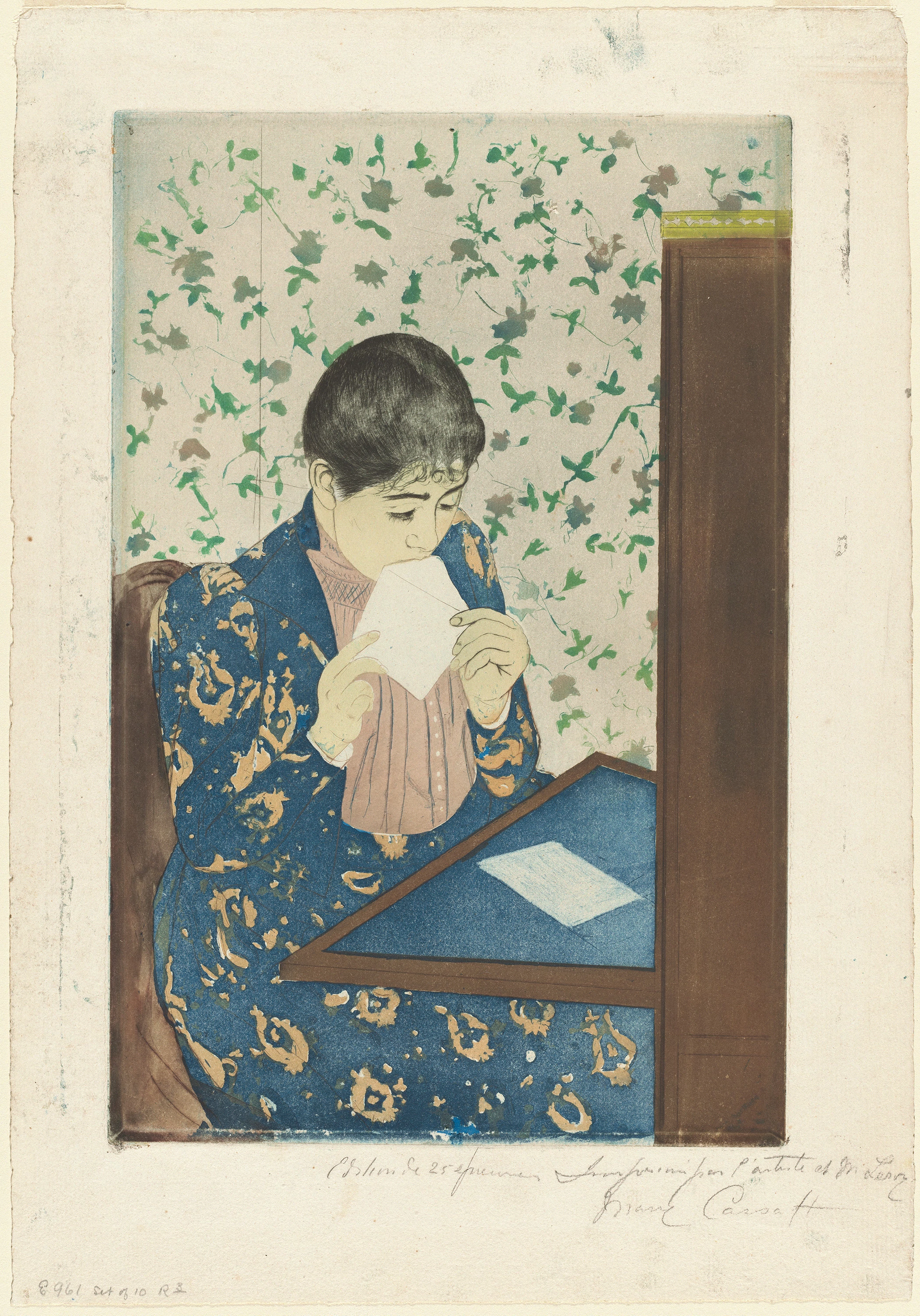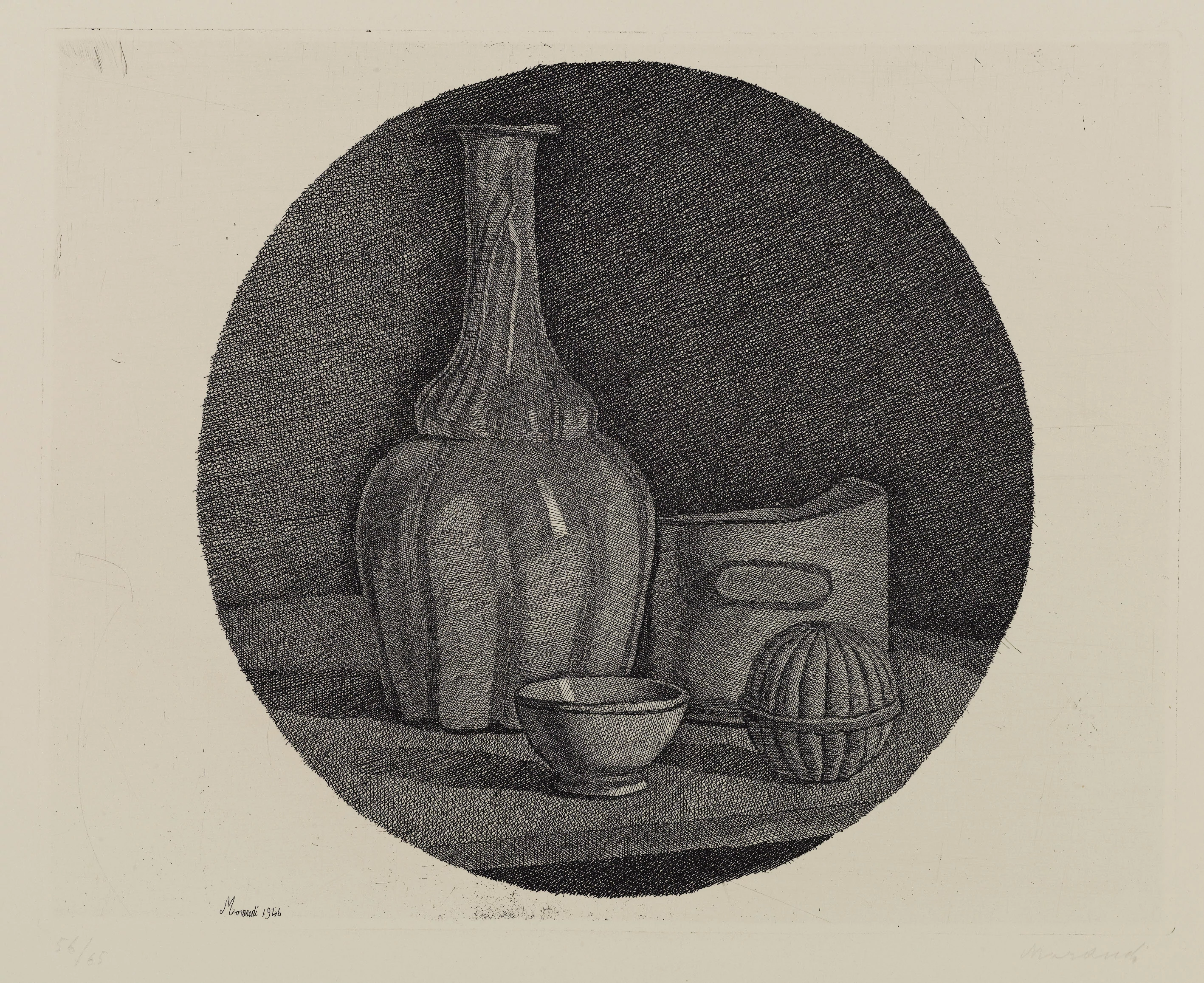Aquatint is an incredibly beautiful, subtle technique for intaglio printmaking, that allows for rich, smooth fields of grays, dark grays and blacks, as opposed to the cross-hatched lines used to create value in traditional etching and engraving. To create an aquatint, an acid-resistant rosin powder is dusted onto the etching plate and affixed by heating. The plate is etched in acid bath as usual, and the acid eats into the metal around the particles creating a pattern of tiny indentations that print as an even, smooth tone. Aquatint is often used with other intaglio techniques as a way to create areas of dense, dark value. Developed in the 1760s, aquatint became popular in Britain in the late 18th and early 19th centuries.







